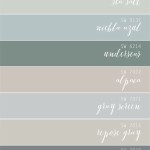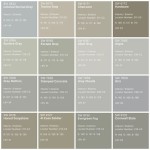Best Paint Color for a Wood Fence: A Comprehensive Guide
Choosing the best paint color for a wood fence is a decision that encompasses both aesthetic preferences and practical considerations. The color selected impacts the overall appearance of the property, influences the fence's longevity, and can even affect the perceived size and ambiance of outdoor spaces. This article delves into the various factors influencing this crucial selection, providing a detailed exploration of paint colors, their properties, and their suitability for different styles and environments.
The selection process should not be approached lightly. The color of the fence serves as a backdrop for landscaping, complements the architectural style of the home, and can either enhance or detract from curb appeal. Furthermore, different colors interact differently with sunlight and weather elements, impacting the rate of fading, heat absorption, and potential mildew growth. Therefore, understanding the nuances of color theory and the characteristics of different paint types is paramount to making an informed decision.
Before even considering specific colors, it’s essential to assess the condition of the wood fence. A new fence may be primed and painted with virtually any color. However, an older fence might have pre-existing stains, fading, or even the remnants of previous paint jobs. These factors can influence how a new paint color appears and how well it adheres to the surface. Proper preparation, including cleaning, sanding, and priming, is crucial for achieving optimal results regardless of the color chosen.
Understanding Color Theory and Its Application to Fences
Color theory is a fundamental principle for understanding how colors interact and create visual harmony. The color wheel, comprised of primary, secondary, and tertiary colors, provides a framework for building color schemes. Complementary colors, located opposite each other on the wheel (e.g., blue and orange), create a vibrant contrast. Analogous colors, located next to each other (e.g., blue, blue-green, and green), offer a more harmonious and subtle effect.
For wood fences, the goal is often to create a color scheme that complements the surrounding environment and the house. Consider the colors of the siding, roofing, and landscaping. If the house has warm tones (e.g., beige, brown, or red brick), a fence in a complementary warm color (e.g., brown, deep green, or even a muted terracotta) might be a good choice. Conversely, a house with cool tones (e.g., gray, blue, or white) might be better suited to a fence in a cool color (e.g., gray, blue-gray, or a light, muted green).
The intensity of the color is another important consideration. Bright, saturated colors can be overwhelming, especially in a large area. Muted or desaturated colors tend to be more versatile and blend more seamlessly with the environment. Consider the amount of sunlight the fence receives. In areas with intense sunlight, lighter colors are often preferred as they reflect more light and help to prevent the fence from overheating and deteriorating prematurely.
Furthermore, the perceived size of the yard can be influenced by fence color. Darker colors tend to make the fence recede visually, making the yard appear larger. This can be beneficial for smaller properties. Lighter colors, on the other hand, can make the fence stand out more prominently, potentially making the yard feel smaller. This effect can be used strategically to define boundaries or create a more intimate outdoor space.
Exploring Popular Paint Color Choices for Wood Fences
While personal preference ultimately dictates the final color choice, certain paint colors have proven consistently popular for wood fences due to their versatility, aesthetic appeal, and practicality. These colors typically fall within neutral or earth-tone ranges, but variations and specific applications can greatly influence their overall impact.
White: A classic choice, white paint offers a clean, crisp look that complements a wide range of architectural styles and landscaping. White fences create a bright and airy feel, and they provide an excellent backdrop for showcasing colorful flowers and foliage. However, white fences require more frequent cleaning and maintenance to prevent staining and mildew growth. They are also more susceptible to highlighting imperfections in the wood.
Gray: Gray has emerged as a popular and sophisticated choice for wood fences. It offers a more modern and understated look than white, while still providing a neutral backdrop for landscaping. Gray fences come in a wide range of shades, from light, almost-white grays to deep, charcoal grays. Lighter grays tend to be more versatile and can create a bright and airy feel, while darker grays offer a more dramatic and contemporary aesthetic. Gray also tends to hide dirt and imperfections better than white.
Brown: Brown paint is a natural and earthy choice for wood fences. It blends seamlessly with the surrounding environment and creates a warm and inviting atmosphere. Brown fences come in a variety of shades, from light, sandy browns to deep, rich browns. Lighter browns can create a more casual and rustic look, while darker browns offer a more formal and sophisticated aesthetic. Brown is also a practical choice as it effectively hides dirt and weathering.
Black: Black paint is a bold and dramatic choice that can create a striking visual impact. Black fences are particularly well-suited to modern and contemporary homes. They can also be effective in creating a sense of privacy and enclosure. However, black fences absorb more heat from the sun, which can contribute to premature fading and wood deterioration. They also require more frequent cleaning to prevent dust and pollen from accumulating and making the fence look dull.
Green: Green paint is a natural and harmonious choice that blends seamlessly with the surrounding landscape. Green fences are particularly well-suited to properties with lush gardens and abundant greenery. Green paints come in a variety of shades, from light, forest greens to deep, olive greens. Lighter greens can create a more cheerful and inviting feel, while darker greens offer a more sophisticated and understated aesthetic. Green can also be effective in concealing the fence within the surrounding foliage.
Factors Influencing Paint Color Longevity and Durability
Beyond aesthetics, the practical considerations of paint color selection are crucial for maximizing the lifespan and appearance of a wood fence. Certain colors are inherently more resistant to fading, weathering, and mildew growth, while others may require more frequent maintenance and upkeep. Understanding these factors can save time, money, and effort in the long run.
UV Resistance: Ultraviolet (UV) radiation from the sun is a primary culprit in paint fading. Darker colors, particularly those containing red pigments, are more susceptible to fading than lighter colors. Paint manufacturers often formulate their paints with UV inhibitors to mitigate this effect, but the inherent properties of certain pigments still play a significant role. Lighter colors, such as white, gray, and light brown, reflect more sunlight and are therefore less prone to fading.
Heat Absorption: Darker colors absorb more heat from the sun than lighter colors. This heat absorption can cause the wood to expand and contract, which can lead to cracking, warping, and peeling of the paint. In hot climates, lighter colors are generally preferred to minimize heat stress on the wood. Black fences, in particular, can become extremely hot to the touch in direct sunlight, potentially posing a safety hazard.
Mildew Resistance: Mildew is a common problem on wood fences, especially in humid climates. Darker colors tend to show mildew more readily than lighter colors. Paint manufacturers often add mildewcides to their paints to inhibit mildew growth, but proper surface preparation and regular cleaning are still essential for preventing mildew buildup. Light-colored paints, such as white or light gray, can help to camouflage mildew stains, making them less noticeable.
Paint Type: The type of paint used also significantly impacts its longevity and durability. Acrylic latex paints are generally considered the best choice for wood fences due to their flexibility, durability, and resistance to fading and cracking. Oil-based paints offer excellent adhesion and penetration, but they are more prone to cracking and chalking over time. Solid stains offer a compromise between paint and stain, providing good color coverage while still allowing the wood grain to show through. Semi-transparent stains offer minimal color coverage but provide excellent protection against weathering and UV damage.
Environmental Factors: The local climate and environmental conditions can also influence the longevity of a fence paint color. In coastal areas, salt spray can accelerate corrosion and fading. In areas with heavy rainfall, moisture can contribute to mildew growth and wood rot. In areas with extreme temperature fluctuations, the paint may be more prone to cracking and peeling. Consider these factors when selecting a paint color and ensure that the paint is specifically formulated for outdoor use and suited to the local climate.
Ultimately, the best paint color for a wood fence is a decision that balances aesthetic preferences with practical considerations. By understanding the principles of color theory, exploring popular color choices, and considering the factors that influence paint longevity and durability, property owners can make an informed decision that enhances the beauty and protects the lifespan of their wood fence.

Fence Paint Color Ideas To Boost Curb Appeal Wow 1 Day Painting

7 Best Paint Choices For A Wood Fence

Top 10 Wonderful Timber Fence Colors For 2025 Pentagon

Top 10 Wonderful Timber Fence Colors For 2025 Pentagon

22 Wood Fence Stain Colors How To Choose The Right One

Wooden Fence Stain Colors That Will Wow My Neighbors Olympic

Tips For Choosing Paint Color Your Fence Pentagon

Which Fence Paint Is Best Top 5 Paints

Which Fence Paint Is Best Top 5 Paints

This Is The Best Fence Paint According To Our Test Results
Related Posts








